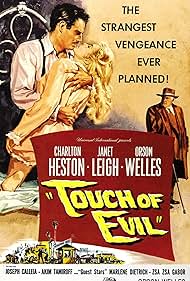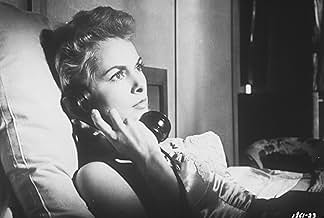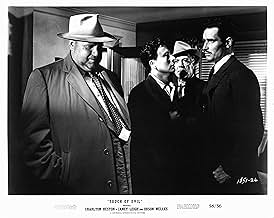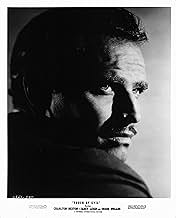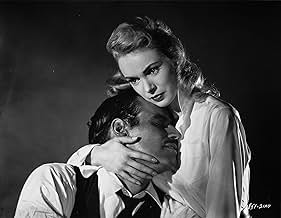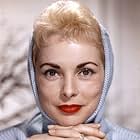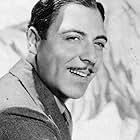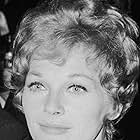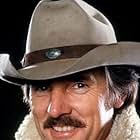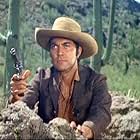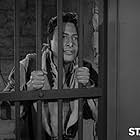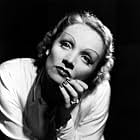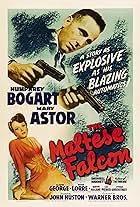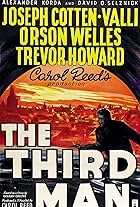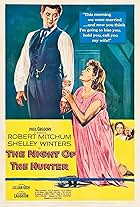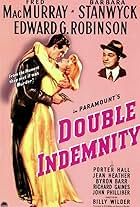A Mexican official and his American wife are targeted in a Texas border town by the crime family he's trying to put behind bars for drug trafficking, as his concern grows over the tactics of... Read allA Mexican official and his American wife are targeted in a Texas border town by the crime family he's trying to put behind bars for drug trafficking, as his concern grows over the tactics of the local detective whose cooperation he needs.A Mexican official and his American wife are targeted in a Texas border town by the crime family he's trying to put behind bars for drug trafficking, as his concern grows over the tactics of the local detective whose cooperation he needs.
- Awards
- 7 wins & 1 nomination
Valentin de Vargas
- Pancho
- (as Valentin De Vargas)
Storyline
Did you know
- TriviaJanet Leigh's agent initially rejected her participation in this film due to the low salary offered without even consulting the actress. Orson Welles, anticipating this, sent a personal letter to the actress, telling her how much he looked forward to their working together. Leigh, furious, confronted her agent telling him that getting directed by Welles was more important than any paycheck.
- GoofsThe car that blows up four minutes into the film has the Texas plate AG 3724; 32 minutes into the film, police car number 10 also has the Texas plate AG 3724.
- Crazy creditsOpening statement (restored version): In 1957, Orson Welles completed principal photography on TOUCH OF EVIL and edited the first cut. Upon screening the film, the Studio felt it could be improved, shot additional scenes and re-edited it. Welles viewed this new version and within hours wrote a passionate 58-page memo requesting editorial changes. This version represents an attempt to honor those requests and make TOUCH OF EVIL the film Orson Welles envisioned it to be. "... I close this memo with a very earnest plea that you consent to this brief visual pattern to which I gave so many long hard days of work." -- Orson Welles
- Alternate versionsA new version, running 111 minutes, has been restored by Universal and debuted at the Telluride Film Festival in September 1998. This version has been re-edited according to Orson Welles' original vision, as outlined in a 58-page memo that the director wrote to Universal studio head Edward Muhl in 1957, after Muhl took editing out of Welles' hands. The new version has been prepared by editor by Walter Murch, sound recordists Bill Varney, Peter Reale and Murch, and picture restorer Bob O'Neil under the supervision of Rick Schmidlin and film critic Jonathan Rosenbaum. One difference between the two versions is that the famous opening tracking shot is now devoid of credits and Henry Mancini's music, featuring only sound effects.
- ConnectionsEdited into American Cinema: Film Noir (1995)
- SoundtracksMain Title (Touch of Evil)
Written by Henry Mancini
Performed by United International Orchestra;
Rolly Bundock (bass); Shelly Manne (drums); Barney Kessel (guitar); Jack Costanzo, Mike Pacheco (percussion); Ray Sherman (piano); Dave Pell (baritone sax); Plas Johnson (tenor sax)Conrad Gozzo, Pete Candoli, Ray Linn (trumpets) ;Red Norvo (vibes)
Featured review
Rather than films like Citizen Kane (1941) and The Lady from Shanghai (1947), neither of which am I a big fan of, Touch of Evil evidences director/writer/star Orson Welles' capacity for cinematic genius. The story is engaging, suspenseful, tight and well paced; the cinematography is consistently beautiful, inventive and symbolic; the setting and overall tone of the film, including the performances, are captivating, yet slightly surreal and otherworldly; and there are many interesting subtexts. This all combines to create a complex artwork that will reward however far a viewer wishes to dig into the film.
Based on a novel by Whit Masterson, Badge of Evil, Touch of Evil is a battle between two policemen--Hank Quinlan (Orson Welles) and Ramon Miguel Vargas (Charlton Heston). Parallel to this is a kind of border battle between the United States, represented by Quinlan, and Mexico, represented by Vargas; the film is set in two border towns, frequently crossing over.
As Touch of Evil opens, we see a bomb being placed in the trunk of a car in Mexico. A construction company owner, Mr. Linnekar, gets in with his girlfriend. Vargas and his new wife, Susan (Janet Leigh), manage to walk along next to the car--they're all crossing the border into the United States. Shortly after crossing, the bomb goes off. This brings the gruff Quinlan into the picture. His investigation of the bombing brings him into Mexico for suspects. Meanwhile, Vargas and his wife are being threatened by Joe Grandi (Akim Tamiroff), a Mexican mob boss, and his underlings. Both Quinlan and Vargas are well respected in their countries, and both are used to getting what they want. But the bombing investigation ends up putting them at loggerheads, and Quinlan gradually turns out to have more than a "touch of evil".
As with many of his films, Orson Welles ended up having to battle the studio to realize his artistic vision. Usually, as here, the battle was unsuccessful for him. Despite his 58-page memo detailing various problems with Universal's non-director supervised reshoots (by Harry Keller) and re-edits, because they felt that Welles' final cut "could use some improvement", the film was released in a form that was not satisfactory to Welles. The fiasco has resulted in various versions of Touch of Evil appearing throughout the years. The 58-page memo was thought to have been lost, but a copy was discovered relatively recently in Charlton Heston's possession. The film was recut in 1998 based on Welles' memo. So make sure that you watch the 111-minute version first released by Universal on DVD in 2000.
The opening scene of Touch of Evil is famous, and rightfully so. Beginning with the timer being set on the bomb, then the bomb being placed in Linnekar's trunk before he gets into the car, we follow both the car and the relative ebb and flow of Vargases as they roughly walk alongside the car, all in one very long tracking shot that covers a lot of ground and features a lot of unusual angles. Welles stages the scene so that there are all kinds of complex background and foreground elements interacting with the car and our protagonist pedestrians. The suspense built up in this scene is incredible--you just know that bomb is going to go off, but you don't know just when, or who it is going to hurt. Compositionally, the scene is simply beautiful. The film is worth watching for this opening alone, but the whole of Touch of Evil features similar, meticulously planned artistry, filled with suspense.
Welles as an actor tends to have a very peculiar way of speaking that is full of affectations. Sometimes this can be a detriment to the film, as it was in The Lady from Shanghai. Here, though, the oddity works, and this despite the fact that, like Woody Allen, he seems to direct his whole cast to deliver their dialogue as if they were him. As a result, Touch of Evil has very peculiar, contrapuntal scenes where people frequently talk on top of one another, with odd phrasing. It works because of the particular kinds of personality conflicts that Welles set up in the script. These are people who frequently _would_ talk on top of each other and occasionally not pay attention to each other.
But that's not the only odd thing about the film. Welles managed to find locations that, shot in this highly stylized and cinematographically complex film-noir manner, seem almost otherworldly. Except for a couple expansive desert shots, Touch of Evil feels eerily claustrophobic, even though most locations aren't exactly enclosed. The various modes and settings are all perfect for their dramatic material, which is mostly dark and moody. One change that Universal made was the excision of a lot of comic relief material featuring the Grandi family. Universal was right to cut it, and wisely, Welles agreed.
The music in the film is also extremely effective but unusual. Most of it is incidental. Latin and rock 'n' roll emanates from radios, for example, and the climax intermittently has a repeating, contextually haunting theme from a pianola.
But of course the story is just as important. Although Welles stated hyperbolically at various points that he was trying to "infuriate" the audience with a somewhat inscrutable plot, and it's true that the plot isn't exactly given in a straightforward manner, once you figure out the gist, it's relatively simple but extremely captivating. At the same time, it is full of symbolism and subtexts, including commentary on justice systems and perhaps some irony about the popular conceptions of the U.S. versus Mexico (made more complex by the fact that Quinlan spends just as much time south of the border and Vargas seems to spend a lot of time north). But as for being annoyed, you're more likely to become infuriated with Quinlan, who becomes more and more deliciously despicable as the film unfolds.
Based on a novel by Whit Masterson, Badge of Evil, Touch of Evil is a battle between two policemen--Hank Quinlan (Orson Welles) and Ramon Miguel Vargas (Charlton Heston). Parallel to this is a kind of border battle between the United States, represented by Quinlan, and Mexico, represented by Vargas; the film is set in two border towns, frequently crossing over.
As Touch of Evil opens, we see a bomb being placed in the trunk of a car in Mexico. A construction company owner, Mr. Linnekar, gets in with his girlfriend. Vargas and his new wife, Susan (Janet Leigh), manage to walk along next to the car--they're all crossing the border into the United States. Shortly after crossing, the bomb goes off. This brings the gruff Quinlan into the picture. His investigation of the bombing brings him into Mexico for suspects. Meanwhile, Vargas and his wife are being threatened by Joe Grandi (Akim Tamiroff), a Mexican mob boss, and his underlings. Both Quinlan and Vargas are well respected in their countries, and both are used to getting what they want. But the bombing investigation ends up putting them at loggerheads, and Quinlan gradually turns out to have more than a "touch of evil".
As with many of his films, Orson Welles ended up having to battle the studio to realize his artistic vision. Usually, as here, the battle was unsuccessful for him. Despite his 58-page memo detailing various problems with Universal's non-director supervised reshoots (by Harry Keller) and re-edits, because they felt that Welles' final cut "could use some improvement", the film was released in a form that was not satisfactory to Welles. The fiasco has resulted in various versions of Touch of Evil appearing throughout the years. The 58-page memo was thought to have been lost, but a copy was discovered relatively recently in Charlton Heston's possession. The film was recut in 1998 based on Welles' memo. So make sure that you watch the 111-minute version first released by Universal on DVD in 2000.
The opening scene of Touch of Evil is famous, and rightfully so. Beginning with the timer being set on the bomb, then the bomb being placed in Linnekar's trunk before he gets into the car, we follow both the car and the relative ebb and flow of Vargases as they roughly walk alongside the car, all in one very long tracking shot that covers a lot of ground and features a lot of unusual angles. Welles stages the scene so that there are all kinds of complex background and foreground elements interacting with the car and our protagonist pedestrians. The suspense built up in this scene is incredible--you just know that bomb is going to go off, but you don't know just when, or who it is going to hurt. Compositionally, the scene is simply beautiful. The film is worth watching for this opening alone, but the whole of Touch of Evil features similar, meticulously planned artistry, filled with suspense.
Welles as an actor tends to have a very peculiar way of speaking that is full of affectations. Sometimes this can be a detriment to the film, as it was in The Lady from Shanghai. Here, though, the oddity works, and this despite the fact that, like Woody Allen, he seems to direct his whole cast to deliver their dialogue as if they were him. As a result, Touch of Evil has very peculiar, contrapuntal scenes where people frequently talk on top of one another, with odd phrasing. It works because of the particular kinds of personality conflicts that Welles set up in the script. These are people who frequently _would_ talk on top of each other and occasionally not pay attention to each other.
But that's not the only odd thing about the film. Welles managed to find locations that, shot in this highly stylized and cinematographically complex film-noir manner, seem almost otherworldly. Except for a couple expansive desert shots, Touch of Evil feels eerily claustrophobic, even though most locations aren't exactly enclosed. The various modes and settings are all perfect for their dramatic material, which is mostly dark and moody. One change that Universal made was the excision of a lot of comic relief material featuring the Grandi family. Universal was right to cut it, and wisely, Welles agreed.
The music in the film is also extremely effective but unusual. Most of it is incidental. Latin and rock 'n' roll emanates from radios, for example, and the climax intermittently has a repeating, contextually haunting theme from a pianola.
But of course the story is just as important. Although Welles stated hyperbolically at various points that he was trying to "infuriate" the audience with a somewhat inscrutable plot, and it's true that the plot isn't exactly given in a straightforward manner, once you figure out the gist, it's relatively simple but extremely captivating. At the same time, it is full of symbolism and subtexts, including commentary on justice systems and perhaps some irony about the popular conceptions of the U.S. versus Mexico (made more complex by the fact that Quinlan spends just as much time south of the border and Vargas seems to spend a lot of time north). But as for being annoyed, you're more likely to become infuriated with Quinlan, who becomes more and more deliciously despicable as the film unfolds.
- BrandtSponseller
- Jul 10, 2005
- Permalink
Details
- Release date
- Country of origin
- Languages
- Also known as
- Badge of Evil
- Filming locations
- El Rancho Courson Motel, SW corner of E Barrel Springs Rd and Courson Ranch Road, Palmdale, California, USA(Mirador Motel - now site of a residential cul-de-sac)
- Production company
- See more company credits at IMDbPro
Box office
- Budget
- $829,000 (estimated)
- Gross US & Canada
- $2,247,465
- Opening weekend US & Canada
- $70,725
- Sep 13, 1998
- Gross worldwide
- $2,285,063
- Runtime1 hour 35 minutes
- Color
Contribute to this page
Suggest an edit or add missing content

